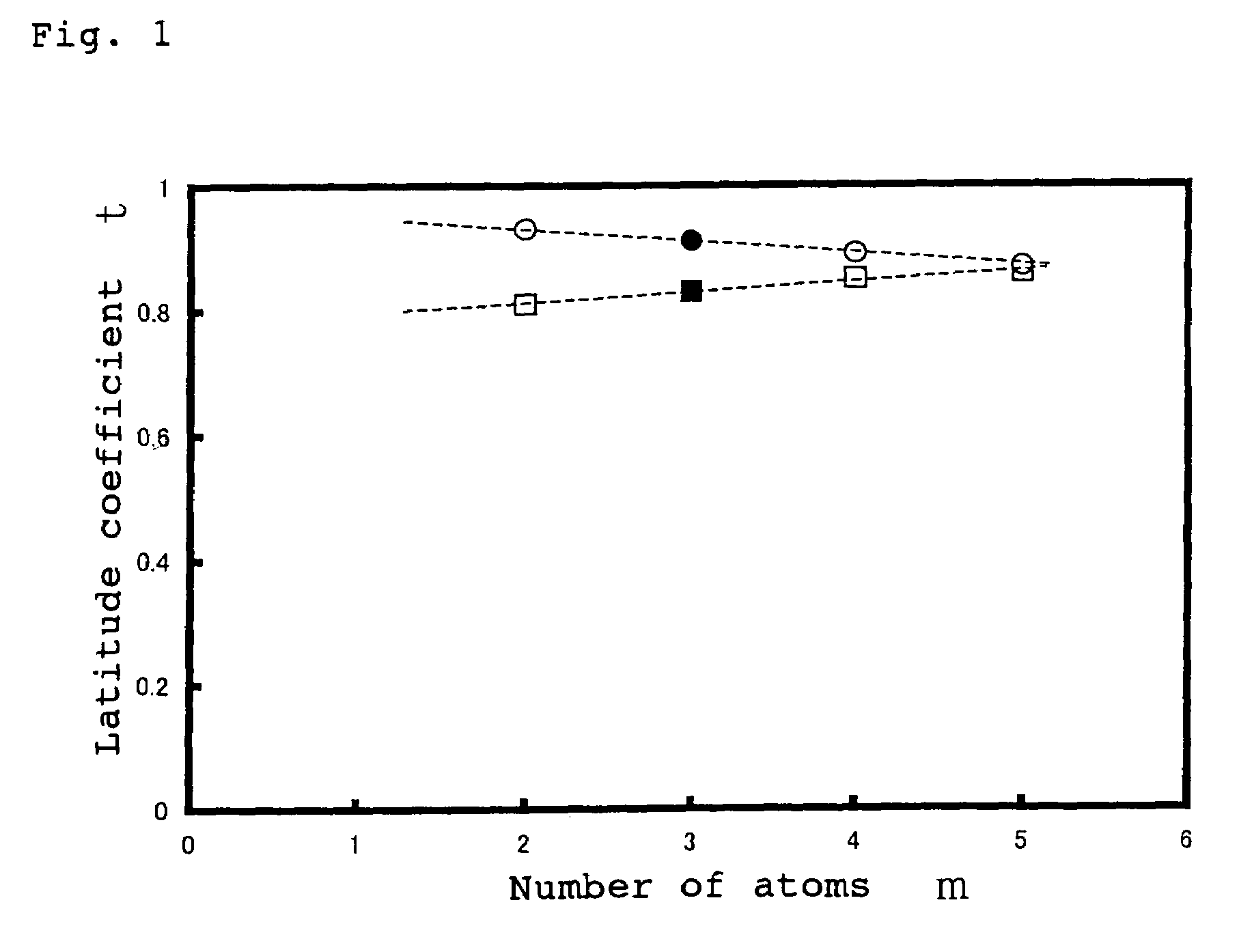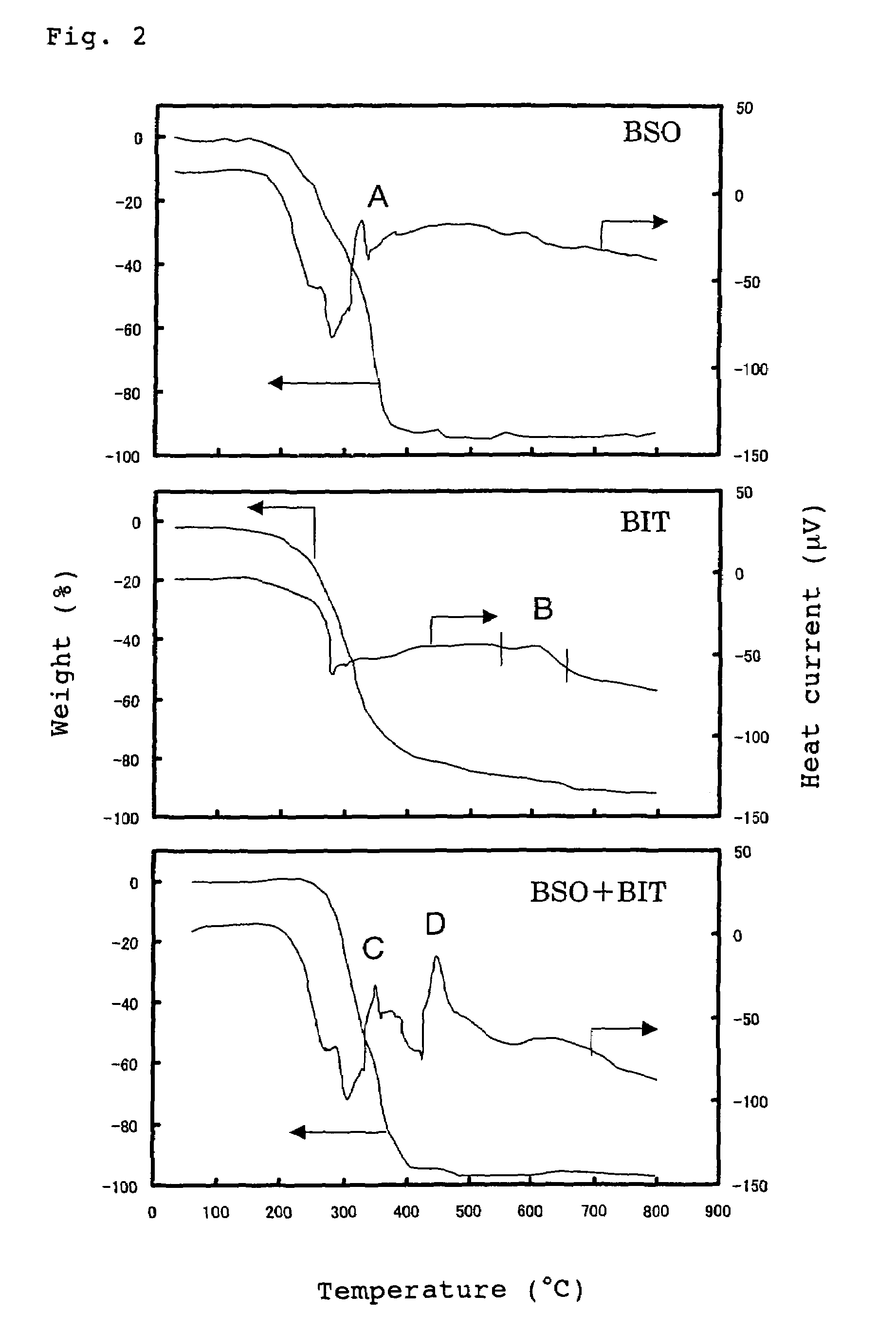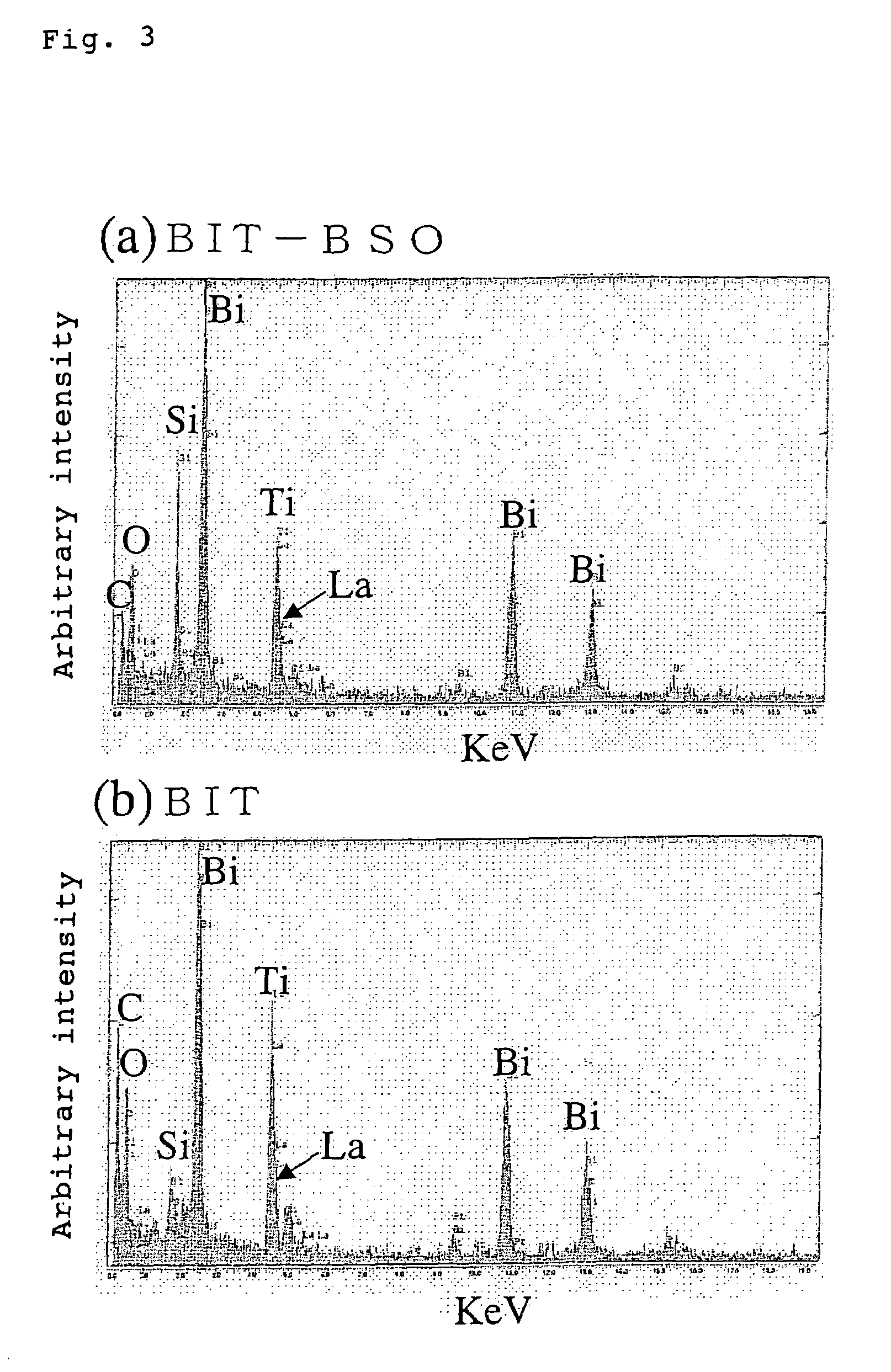Oxide material, method for preparing oxide thin film and element using said material
a technology of oxide thin film and oxide material, which is applied in the direction of metal/metal-oxide/metal-hydroxide catalyst, natural mineral layered product, chemical/physical process, etc., can solve the problems of high integration of ferroelectric memory, difficult to obtain objective ferroelectric single layer, and inability to apply ferroelectric memory to a large capacity product in mbit level
- Summary
- Abstract
- Description
- Claims
- Application Information
AI Technical Summary
Problems solved by technology
Method used
Image
Examples
example 1
Catalytic Property of Bi2SiO5 (BSO)
[0101]A BSO sol-gel solution was spin-coated on a platinum electrode formed on a substrate, and an organic component was removed on a hot-plate (400° C.) to produce a BSO thin film of 100 nm.
[0102]The substrate with platinum having the BSO thin film formed thereon was immersed in a 1% ammonia aqueous solution. At this time, Bi3+in the BSO thin film became Bi(OH)3 in the ammonia aqueous solution, and as a result H+ became excessive in the aqueous solution to exhibit weak acidity of pH 5.
[0103]Differential thermal analysis (TG-DTA) was carried out by using a 10% by weight Bi4Ti3O12 (BIT) solution, a 10% by weight BSO solution and a BIT—BSO mixed solution (a mixed solution obtained by mixing 0.4 mole of BSO per 1 mole of BIT, R=0.4) respectively. The results are shown in FIG. 2.
[0104]It is understood from FIG. 2 that the BSO solution is crystallized at a low temperature of about 350° C. It is also understood that the BIT solution is difficult to be cr...
example 2
Film Formation by Sol-Gel Process
[0108]5% by weight of a BIT sol-gel solution and 1% by weight of BSO sol-gel solution were mixed to prepare a BIT—BSO mixed solution (R=0.4). The mixed solution in this case was in such a state that the respective components were present as a mixture, as shown in FIG. 4.
[0109]On a platinum electrode, the following operation was repeated four times by using the mixed solution, i.e., (1) spin coating (500 rpm for 5 seconds and 4,000 rpm for 20 seconds), (2) drying (in the atmosphere at 50° C. for 2 minutes), and (3) calcination (in the atmosphere at 400° C. for 5 minuets), to make a thickness of 100 nm. It was confirmed that the film thus obtained was in the state where only BSO was crystallized as shown in FIG. 5(a), and the crystallized BSO was surrounded by amorphous BIT.
[0110]Subsequently, (4) baking (crystallization) was carried out (at 600° C. for 15 minutes, RTA in oxygen of 1 kg / cm2), and an upper platinum electrode was formed on the resulting ...
example 3
Characteristics of Solid Solution Thin Film of BSO—Bi4Ti3O12 (BIT), BSO—SrBi2Ta2O9 (SBT) and BSO—PbZr0.52Ti0.48O3 (PZT)
[0145]A BIT, SBT or PZT solution for forming a ferroelectric thin film, the polycondensation of which has been completed with controlled hydrolysis, and a BSO solution for forming a dielectric material thin film, the polycondensation of which has been completed with controlled hydrolysis, are mixed at room temperature according to Example 2. The BSO gel content in the mixed gel for forming a ferroelectric material was a molar ratio R=0.4, 0.33 and 0.1 for BIT, SBT and PZT, respectively. The raw material gel is one having the stoichiometric composition.
[0146]The sol-gel mixed solution was coated on a Pt / Ti / SiO2 / Si substrate by a spin coating method, and a film was formed under the following film forming conditions. The thickness was 100 nm in all the cases.
(Conditions for Forming Ferroelectric Thin Film)
[0147](1) Spin coating (at 500 rpm for 5 seconds and 4,000 rpm f...
PUM
| Property | Measurement | Unit |
|---|---|---|
| temperature | aaaaa | aaaaa |
| temperature | aaaaa | aaaaa |
| temperature | aaaaa | aaaaa |
Abstract
Description
Claims
Application Information
 Login to View More
Login to View More - R&D
- Intellectual Property
- Life Sciences
- Materials
- Tech Scout
- Unparalleled Data Quality
- Higher Quality Content
- 60% Fewer Hallucinations
Browse by: Latest US Patents, China's latest patents, Technical Efficacy Thesaurus, Application Domain, Technology Topic, Popular Technical Reports.
© 2025 PatSnap. All rights reserved.Legal|Privacy policy|Modern Slavery Act Transparency Statement|Sitemap|About US| Contact US: help@patsnap.com



